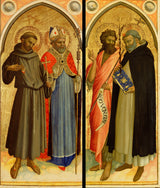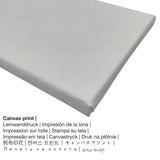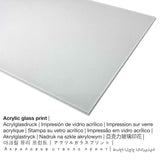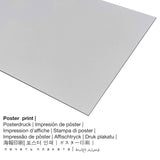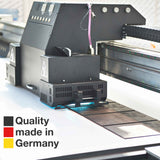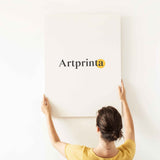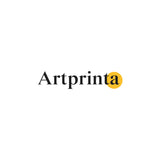Fra Angelico, 1429 - Saint Francis na onye bishọp Saint, Saint John the Baptist - ọmarịcha nka
Ụtụ gụnyere. Mbupu gbakọrọ na ndenye ọpụpụ.
Data data
Nke a mpempe nka aha Saint Francis and a Bishop Saint, Saint John the Baptist kere site na mmalite mmalite nwe- Fra Angelico. Ugbu a, ihe nkiri a dị n'ụdị Ụlọ ihe ngosi nka nke J. Paul Getty mkpokọta nka dị na Los Angeles, California, Njikota Obodo Amerika. Site n'ikike nke - The J. Paul Getty Museum (nwere ikike - ngalaba ọha).Ebe E Si Nweta nke ihe osise:. Kedu ihe ọzọ, nhazi nke mmepụta dijitalụ dị n'ime Eserese format na nwere akụkụ ruru nke 1: 1.2, which means that the length is 20% shorter than the width. Fra Angelico was a male painter, draftsman of Italian nationality, whose artistic style can mainly be classified as Early Renaissance. The artist was born in 1395 in Vicchio, Firenze province, Tuscany, Italy and passed away at the age of 60 in the year 1455.
(© Nwebiisinka - nke J. Paul Getty Museum - www.getty.edu)
These panels once served as wings of a portable altarpiece used for private devotion. The left panel shows Saint Francis, who is recognized by the stigmata on his hands, feet, and side. The three knots tied in the sash around his waist symbolizing his Franciscan Order's three religious vows: poverty, chastity, and obedience. An unidentified bishop saint wearing a cope and miter and holding a crozier stands to the left of Francis.
The right panel depicts Saint John the Baptist, who is identified by his reed cross and tunic of animal skins, and Saint Dominic, who wears the habit of his Dominican Order. He holds a lily, the symbol of chastity, and carries a book of the Gospels.
The Dominican monk Fra Angelico, whose clerical name means "Angelic Brother," was among the first to adopt Masaccio's innovative naturalism. Though he still employed a gold background, Fra Angelico used shading to model plausible figures in the round. These paintings epitomize his particular delicacy of color, sensitivity of expression, and ability to convey the spiritual grace of saints.
Tebụl a haziri ahazi nke ọrụ nka
| Aha nka: | "Saint Francis and a Bishop Saint, Saint John the Baptist" |
| Nhazi: | sere |
| Nhazi nka: | nka ochie |
| Narị afọ nka: | 15th narị afọ |
| Emepụtara na: | 1429 |
| Afọ nka: | ihe karịrị afọ 590 |
| Ọkara nke ihe osise izizi: | tempera na akwukwo ọla edo na panel |
| Ụlọ ihe ngosi nka / ebe: | Ụlọ ihe ngosi nka nke J. Paul Getty |
| Ebe ngosi nka: | Los Angeles, California, Njikota Obodo Amerika |
| Dị n'okpuru: | www.getty.edu |
| Ikikere nke ihe osise: | ngalaba ọha |
| Site n'aka: | Ụlọ ihe ngosi nka nke J. Paul Getty |
Nchịkọta nkenke nke onye na-ese ihe
| Aha onye nka: | Fra Angelico |
| Aha ndị ọzọ: | Fiesole Giovanni da, Beata Angelica da Fiesole, Beato Angelico da Fiesole, Angelico Fra Giovanni, Piero Guido di, Angelico Fra Giovanni da Fiesole, Beato Gio: Angelico da Fiesole, Fra. Giovanni da Fiesole called Il Beato Angelico, Beato Angelico, B. Gio. Angelo da Fiesole, Giovanni da Fiesole, Pietro Guido di, Giovanni da Fiesole, Angelico Guido di Piero da Mugello, Fra Giovanni Angelico da Fiesole, Beato Juan florentino, Fra Giovanni da Fiesole gen. Fra Angelico, don Giovanni Angelico, Beato Gio: Angelico, Guido di Piero, Beato Gio. Angelo di Fiesole, B. Angelico, Beato Giov. Angelico, Angelico Fra, beato Giovanni Angelico domenicano, Fiesole, Guido di Piero da Mugello, fra Giovanni da Fiesole domenicano, Fra Angelico, Guido di Piero, Beata Da Fiesole, Da Fiesole Giovanni, Beato Giovanni, Vicchio Guido da, beato fra Angelico, Giovanni Angelico, Angelico Fra Giovanni Da Fiesole, fra angelico. fiesole, Beato Gio. Angelo da Fiesole, Fra Giovanni Da Fiesole Angelico, B. Angelico da Fiesole, Da Fiesole |
| okike nke onye nka: | nwoke |
| Obodo onye nka: | Italian |
| Ọrụ: | onye na-ese ihe, onye na-ese ihe |
| Obodo onye nka: | Italy |
| Nkewa onye nka: | nna ukwu ochie |
| styles: | Renaissance mmalite |
| Nwụrụ anwụ: | 60 afọ |
| A mụrụ: | 1395 |
| Ebe omuma: | Vicchio, mpaghara Firenze, Tuscany, Italy |
| Nwuru: | 1455 |
| Obodo ọnwụ: | Rome, Rome Province, Lazio, Italy |
Họrọ ngwa ngwaahịa masịrị gị
The product dropdown menu gives you the possibility to select your favorite size and material. The following options are available for individualization:
- Mbipụta aluminom (aluminium dibbond): These are metal prints on aluminium dibond with an impressive depth. The Aluminium Dibond Print is the best introduction to the sophisticated world of fine art replicas on aluminum. For our Direct Aluminium Dibond option, we print your selected work of art right onto the surface of the white-primed aluminum. This direct UV print on Aluminum Dibond is the most popular entry-level product and is a truly modern way to showcase art reproductions, since it draws attention on the artwork.
- Ebipụta akwụkwọ mmado na ihe akwa akwa: The poster print is a UV printed canvas paper with a slight texture on the surface. It is suited for framing your art replica using a custom frame. Please keep in mind, that depending on the size of the poster we add a white margin between 2-6cm round about the print motif, which facilitates the framing with your custom frame.
- Mbipụta kanvas: A UV printed canvas material stretched on a wood stretcher frame. A canvas generates a attractive and enjoyable feeling. Hanging a canvas print: Canvas prints are relatively low in weight, meaning that it is easy to hang the Canvas print without the help of additional wall-mounts. Because of thatcanvas prints are suitable for all kinds of walls.
- Mbipụta enyo acrylic: An print on acrylic glass, which is sometimes described as a print on plexiglass, makes the original work of art into magnificient wall décor. The great benefit of an acrylic glass art print is that contrasts and also granular artwork details become visible thanks to the fine tonal gradation. Our plexiglass protects your custom art print against sunlight and external influences for up to 6 decades.
Nkọwa ihe ahaziri ahazi
| Ụdị ngwaahịa: | ezi nka mmeputakwa |
| Usoro mmeputakwa: | dijitalụ mmeputakwa |
| Usoro mmepụta: | mbipụta dijitalụ |
| Mmalite ngwaahịa: | emepụtara na Germany |
| Stockdị ngwaahịa: | na mmepụta ihe |
| Ngwaahịa were: | ihe ndozi ụlọ, ụlọ mmepụta nka nka |
| Ndozi onyonyo: | usoro eserese |
| Oke akụkụ onyonyo: | 1: 1.2 |
| Mmetụta ihe onyonyo: | ogologo bụ 20% mkpụmkpụ karịa obosara |
| Akwa mmeputakwa dị: | Mpempe akwụkwọ, akwụkwọ mmado (akwụkwọ kwaaji), mbipụta ọla (aluminium dibond), mbipụta iko acrylic (nwere ezigbo mkpuchi iko) |
| Nha n'arọwa n'elu ihe ndọtị (mbipụta akwa akwa): | 50x60cm - 20x24", 100x120cm - 39x47", 150x180cm - 59x71" |
| Acrylic glass print (nwere ezigbo mkpuchi iko) nhọrọ: | 50x60cm - 20x24", 100x120cm - 39x47", 150x180cm - 59x71" |
| Nhọrọ nha nke akwụkwọ mmado (akwụkwọ kwaaji): | 50x60cm - 20x24", 100x120cm - 39x47" |
| Mpempe aluminom (aluminium dibond ihe) nha: | 50x60cm - 20x24", 100x120cm - 39x47" |
| Igwe onyonyo: | adịghị |
Ozi dị mkpa: We try everythig possible to depict our products in as much detail as possible and to illustrate them visually on the different product detail pages. Nonetheless, the pigments of the print materials and the printing may diverge marginally from the image on the device's screen. Depending on the settings of your screen and the nature of the surface, not all colors can be printed as realistically as the digital version on this website. Bearing in mind that all the art reproductions are processed and printed manually, there might as well be minor deviations in the exact position and the size of the motif.
© Copyright - ikike ọgụgụ isi nke | Artprinta.com

